There are 40 good companion plants for Dahlias in this list including a variety of plants, such as herbs, flowers, and vegetables.
Did you know that you can creatively pair beautiful dahlia flowers with compatible plants to add exceptional interest and abundance to your garden? Wondering what plants there are? Our comprehensive guide of companion plants for dahlias can help you choose the ultimate plant options for your garden.
Dahlia flowers do an incredible job of adding interest to your garden, thanks to their intense colors and relative ease of maintenance. Available in over 40 varieties, these flowering plants are also strong and pair well with many other plants.
Now, knowing the ideal plants to pair with dahlia in your garden doesn’t only beautify it. Dahlia companionship comes with an array of other benefits in your garden. These include enriching and fishing your soil, repelling unwanted pests, and even promoting better, healthier growth.
Recognizing that every gardener has their own garden needs, we’ve made sure we appeal to everyone. In our guide, you will find 39 of the best companion plants for dahlias to help you choose which ones to add to your garden. You will also find a full list of the worst plants to pair with these elegant florals to ensure you keep your garden healthy and thriving.
Table of Contents
What Are The Best Companion Plants for Dahlias?
The best companion plants for dahlias include nasturtiums, coneflowers, comfrey, geraniums, and herbs, such as mint, coriander, and rosemary. However, the list of dahlia companion plants is quite extensive. There are more than 50 different plants to pair.
To understand which plants best pair with dahlias, you have to consider their characteristics. Here are some of the common features to consider when deciding whether or not a plant is compatible with dahlia herbaceous perennials;
- Dahlia prefer warmer condition with USDA hardiness zone 8 or warmer – the best companion plants thrive in similar conditions
- Dahlias are heavy feeders and like their space – avoid pairing them with equally heavy feeders – ideally, perennials that grow in their corner and space
- Dahlias are tall plants – so, they pair well with shorter plants. The two complement each other, shorter plants that prefer partial shade will benefit the most while protecting the taller dahlia from being blocked from full sun exposure (which is essential for their growth).
- Pair dahlias with pest-repelling plants. Ideally, pests that can repel slugs, snails, aphids, and Japanese beetles – dahlias’ biggest enemies.
39 Dahlia Loving Plants To Add to Your Garden
Dahlias are a pretty incredible garden plant and pair pretty well with many plants. Dahlias are sun-loving plants that thrive well under direct sunlight. Typically, the plant needs at least 6 to 8 hours of exposure to direct sunlight a day to grow tall, bloom abundantly all summer long, and thrive.
Dahlia tubers also love dirt, growing well in well drained soil with a pH of 6.5 to 7.0 (slightly acidic to neutral). Unbeknownst to many people, dahlias also grow well in ports, as long as it’s the ideal size with proper drainage and exposure to full sun.
Here are the best companion plants to pair with dahlias for an abundant garden;
Plant Fellow Herbaceous Perennials
1. Nasturtiums
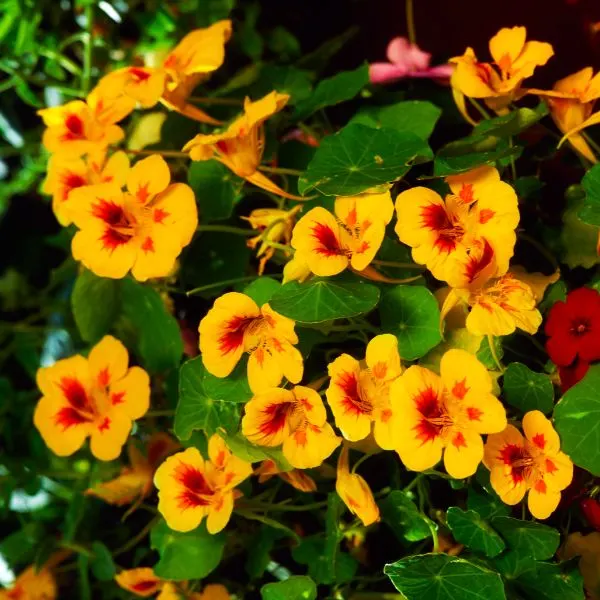
An excellent companion for dahlia, nasturtium grows beautiful flowers that complement dahlias for added garden beauty. Nasturtiums are also pretty effective at repelling multiple bad pests while attracting good ones.
Nasturtiums are particularly effective at repelling bugs that penetrate dahlias to suck out their nutrients. These include repelling cucumber beetles and aphids while attracting butterflies, bees, and mantids. Like dahlias, these beautiful flowering plants love sunny set up with warm and well-drained soils.
When paired with dahlias, these plants don’t compete for the ground either. In fact, they help to create an aesthetically attractive lush garden carpet underneath dahlias.
2. Coneflower
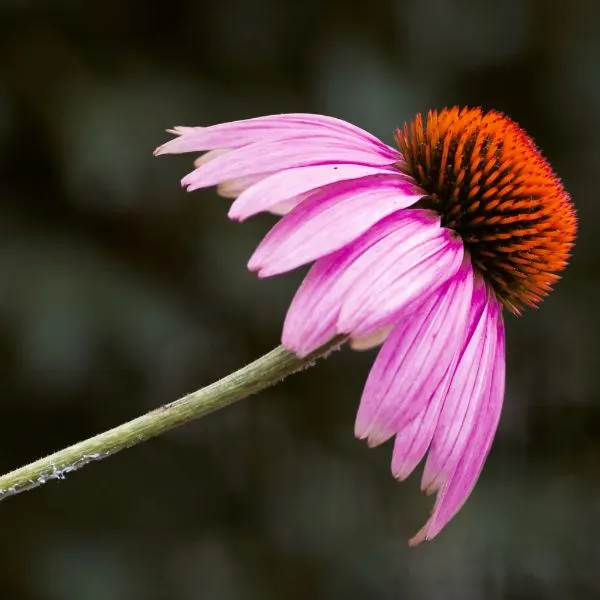
Coneflowers resemble sunflowers, but they’re much smaller. These beautiful flowering plants are a great companion for dahlias in many ways, including beautifying your garden. Coneflowers grow striking, spiky foliage that blends well with the more subtle-looking dahlia plants.
Coneflowers also aid in pollination, attracting good pollinators, like bees, butterflies, and hummingbirds. In addition to taking up little space, coneflowers also thrive well under full sun and well-drained soils.
3. Nicotianas
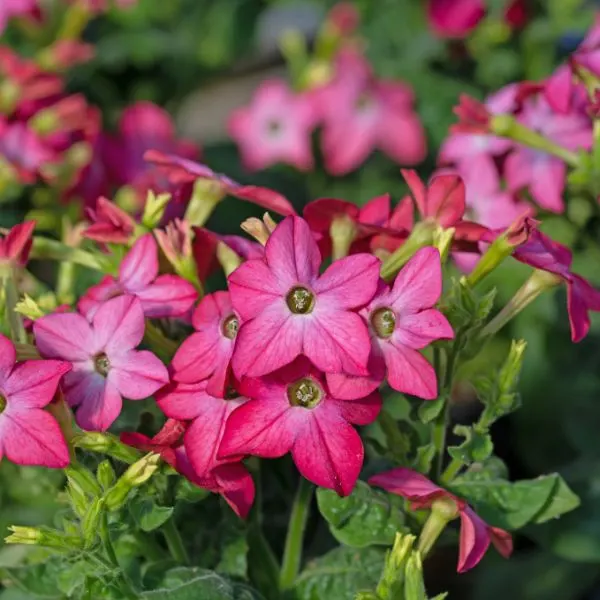
Nicotianas add an extra layer of elegance to your garden with their fragrant flowers that ooze sweet aromas. Paired with the unscented dahlias, they offer an incredible color contrast while adding to the beautiful aromas. Our personal favorite varieties are the Grandiflora and perfume purple.
4. Snapdragons
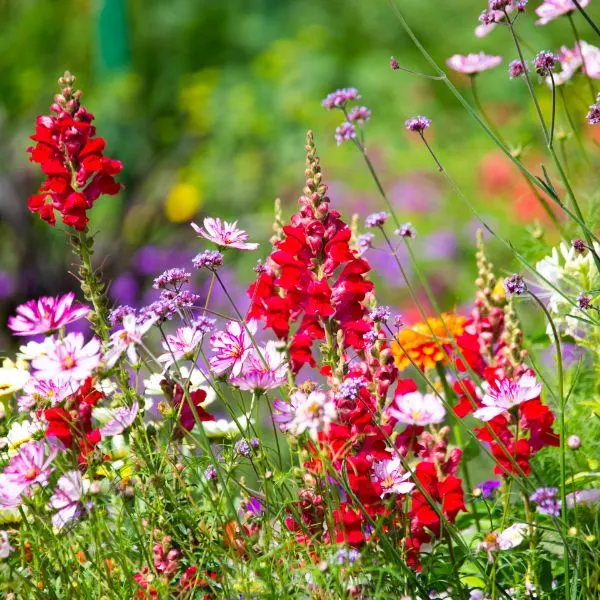
Native to the western North America and Mediterranean regions, snapdragons offer a beautiful pop of color to adorn your garden; their low-growing herbaceous nature makes them an ideal option to fill out space on the ground left by dahlias. These plants are short enough that they don’t cause any disruption to the growth of dahlias. Yet, their multicolor interest will blow you away.
5. Blazing Star
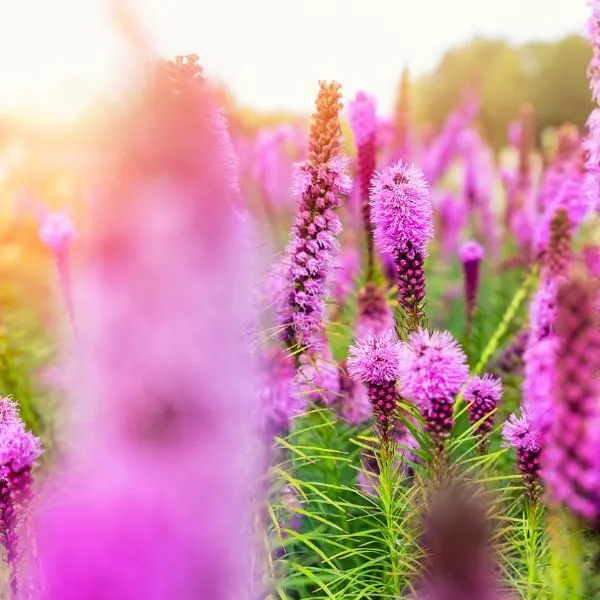
If you want to add beautiful peculiarity to your garden, what better way to do so than by adding blazing stars? The flowering native perennial plant grows clumps of feathery purple or white flowers that bloom in summer. You should pair blazing stars with dahlias to create an exceptional garden pattern with contrasting textures for a pretty interesting setup.
6. Turtlehead
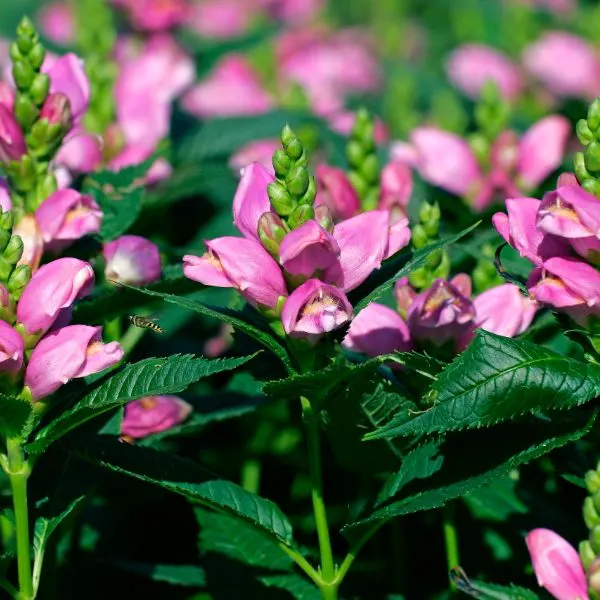
Similar to snapdragons, turtleheads grow hooded, lip-like flower petals in white, purple, and pink colors and add an amazing interest to your garden. Growing to about 3 feet tall and about two feet wide, you can pair these flowers with dahlias to create a vertical interest. Alternatively, use them as backdrops on beds, planted from smaller to medium-sized dahlia varieties.
7. Giant hyssop

Part of the mint family, the herbaceous perennial, giant hyssop is a popular garden pick. Growing pale purple to pink blossoms, these plants are great for complementing dahlia. You can plant them as border plants or between dahlias to highlight their flowers.
Or, Use Other Flowering Plants
8. Bee balm
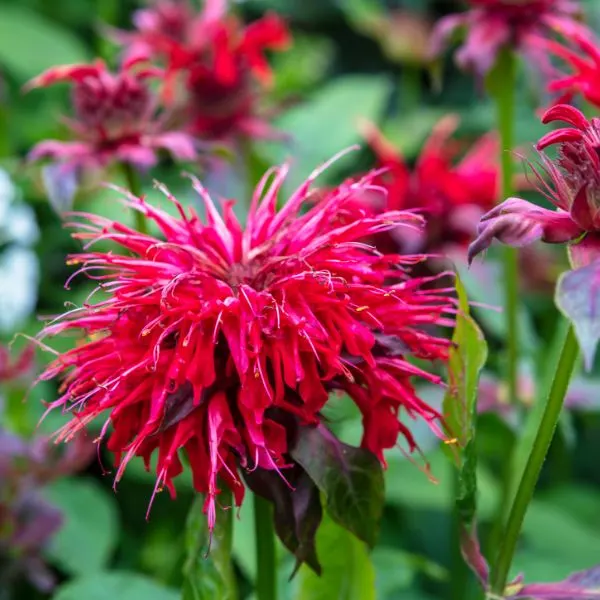
A flowering plant in the mint family, also known as monarda or wild bergamot, bee balm loves growing with dahlias. In addition to their beautiful blooms, bee balm unleashes a pleasant bergamot orange fragrance from its leaves.
The colorful bee balm blossoms do an incredible job of attracting pollinators, such as bees and butterflies to your garden.
9. Alliums
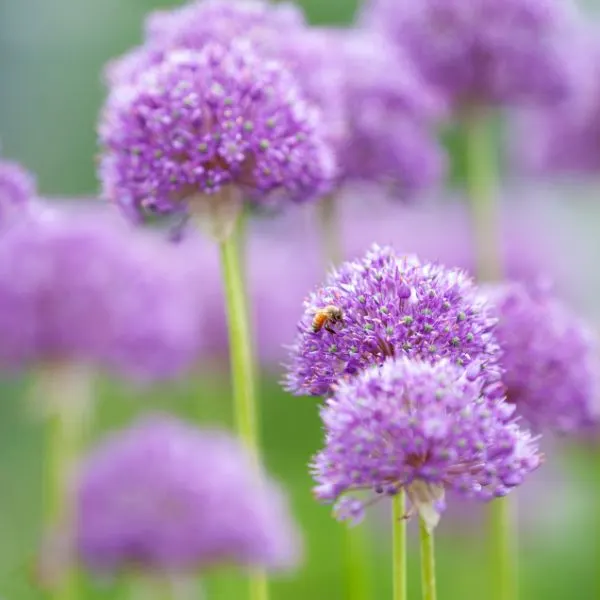
Growing in similar conditions, dahlias and alliums complement each other pretty well as companion plants. Alliums are particularly great for integrating into border gardens, edible gardens, rock gardens, or even, in mass plantings.
Alliums usually boast intense fragrance oils that help repel many unwanted pests. These include dahlia-targeting pests, such as aphids, spider mites, cabbage maggots, and carrot flies.
10. Geranium

An excellent pollinator, geranium doesn’t just attract some of the pollinators to your dahlia garden. Its versatile mix of blossom colors can transform your garden into a haven. The flowering plants develop palmately cleft leaf foliage with a beautiful circular form.
The leaf foliage accentuates its versatile selection of five-petaled blossoms that come in a choice of white, red, yellow, pink, purple, or blue. you can pair geraniums and dahlias by color-coordinating them in a foundation planting or backdrop
Geraniums also repel unwanted pests, like Japanese beetles, one of dahlias’ biggest nemesis. Japanese beetles love geraniums. So, planting them near dahlias redirects the beetles to them. Geraniums can also thrive in partial shade.
Being that they are shorter (4 inches to 4 feet tall) than dahlias (15 inches to 6 feet tall), you can arrange them so that dahlias provide partial shade from the sun. It becomes a win-win situation! You can plant geraniums as a bedding plant or in containers. Plus, geraniums grow in any soil conditions as long as there’s no water logging.
11. Roses
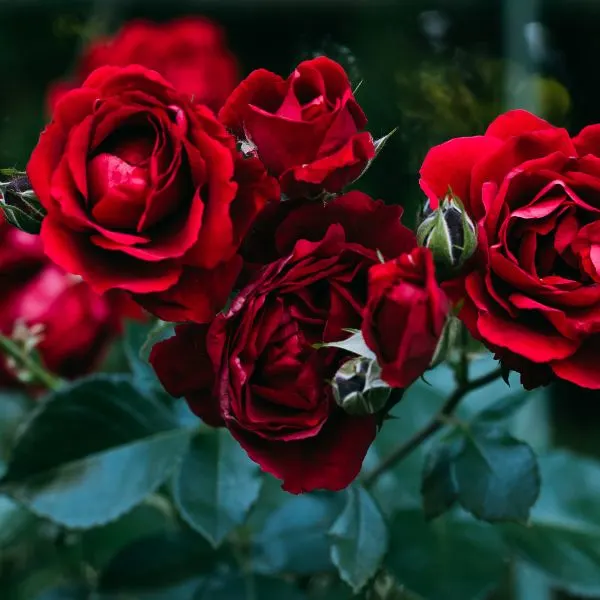
Like geraniums, roses are equally excellent pollinators and complement dahlias to create a beautiful garden. Roses are effective at attracting pollinators, such as bees and butterflies. On the other hand, they also repel a good number of unwanted insects and pests.
Like dahlias, roses love well-drained, warm soils and direct sunlight exposure for at least 6 to 8 hours. However, they also require constant watering to prevent wilting.
12. Peonies
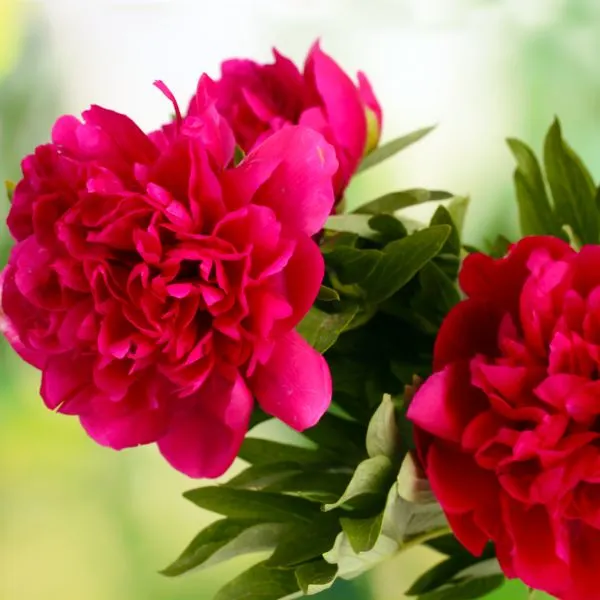
Adding an elegant pop of color to your garden, peonies grow abundant blossoms to enhance garden colors. Peonies grow a variety of blossom colors, including white, pink, rose, or deep crimson. They also develop large foliage that stays longer to provide a striking contrast to dahlias.
For aesthetics, you can set the peonies in front or behind dahlias. Plus, these don’t take up much space and can even complement dahlias in pots or containers.
13. Verbena

Verbena comes in many varieties, but, verbena bonariensis is a popular variety to pair with dahlias. They are a particularly excellent partner when it comes to borders. Verbena usually grows loose stems, which don’t compete with dahlia. This explains why they pair well. Their blossoms also make them popular pollinators for dahlias.
14. Crocosmias
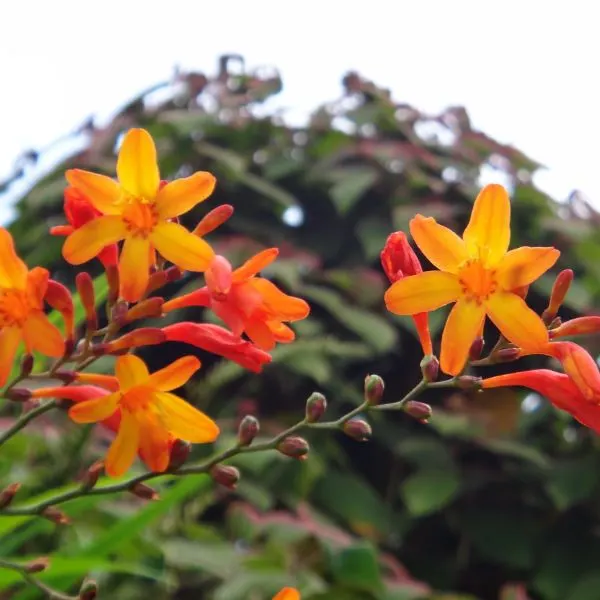
The summer blooming crocosmias integrate an incredible blossom and foliage interest that pairs well with dahlias. So, to give your garden a striking color and texture, this is an excellent flowering plant to incorporate.
Surviving in similar conditions as dahlia, crocosmias grow orange-red blooms that resemble lilies. These lily-like flowers are accentuated by spear-like green foliage. Paired with the rose-like dahlias flowers, crocosmias look like attractive little birds taking in the view of the flowers.
15. Floss Flower
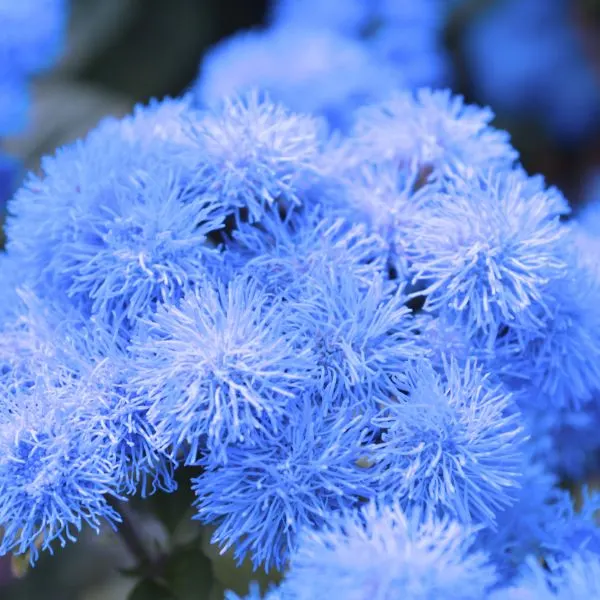
The perfect flowering plant to pair with dahlia, the floss flower is a low-profile annual that survives between zones 2 and all. Blossoming from summer to fall, the perennial offers a variety of blossom colors. These include lavender blue, pink, red, or white.
Grown with dahlias, floss flowers offer an incredible texture contrast with their fuzzy button-like blossoms against the smooth, waxy dahlia blossoms.
16. Lantana Camara
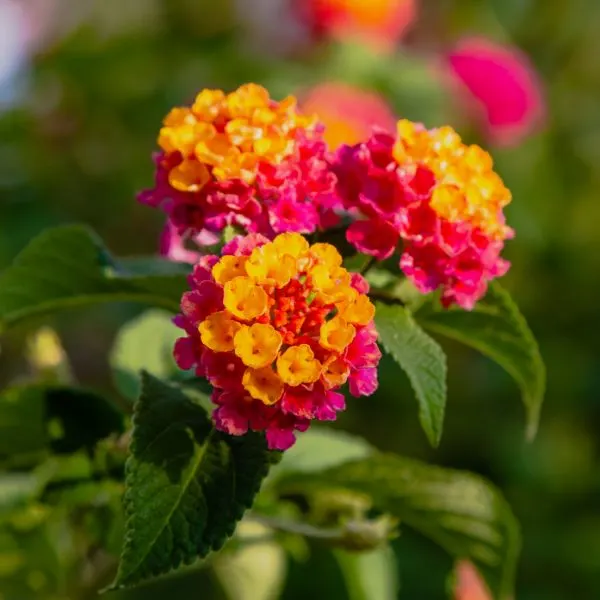
A native of the American tropics, lantana is a zone 10 to 11 annual perennial that grows an attractive cluster of multicolored blossoms. The perennial grows flowers in an array of pink, purple, red, and yellow hues for a truly dramatic and rich color contrast. The flowers offer a fun setup in front bed placements, borders, or containers.
17. Comfrey

Another popular companion plant for dahlias, comfrey provides great cover for a dahlia garden. Growing to about 5 feet tall, the flowering plant has a thick hairy stem with dull purple, blue or whitish flowers, growing in clusters to provide a good contrast to the larger dahlia flowers. The hardy perennial is also great at repelling several unwanted bugs, including snails and slugs.
Note: Comfrey leaves are naturally high in potassium, making them great natural fertilizers.
18. Lilies
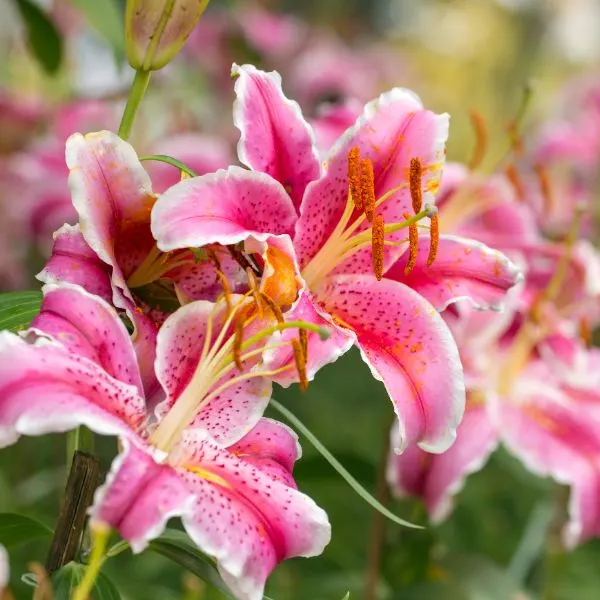
For the ultimate floral garden haven, pair dahlias with lilies. Whether African or Peruvian lilies, the two flowering plants grow well without competing for resources. On the other hand, they effortlessly blend their flower colors well. Typically, lilies grow beautiful trumpet-shaped blossoms accentuated by their long, lance-shaped leaves.
You can mix and match the colors or choose any option from pink to gold, red, orange, or white. Lilies also possess the ability to repel slugs and can effortlessly grow in pots or containers.
19. Achilleas
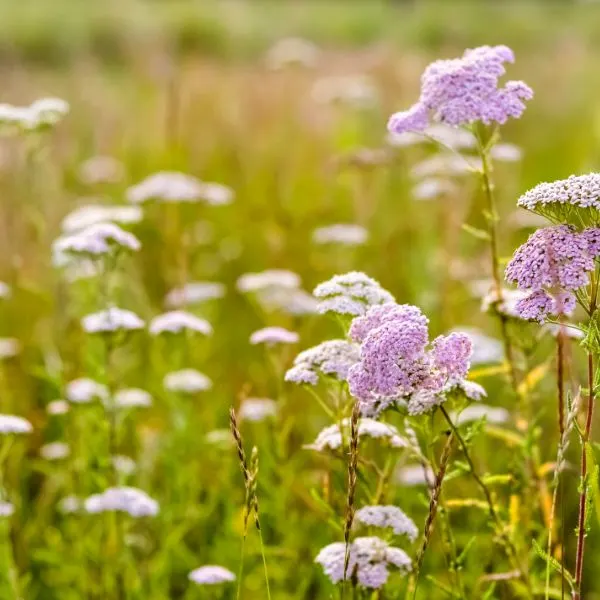
The achilleas flowering plant grows flat top yellow, pink, or white flower clusters with fern-like foliage to achieve its distinctive look. These tiny flowers add excellent interest to ornamental borders with their bright, colorful flowers and feathery foliage.
Also known as yarrow, achilleas pair great with dahlia planted above or beneath a dahlia canopy. This is an excellent way to showcase both of these beautiful flowers in your garden.
20. Tulips

Part of the lily family, the bulb-like tulip flowers add superior interest to your garden. Growing in similar conditions without competing, tulips and dahlias can co-exist perfectly, especially as a bedfellow. Planting tulips between your dahlias is an artistic way to showcase your gardening work.
These flowers come in a selection of colors and sizes. So, you can design your garden however you want. Plus, they give your garden longer floral interest. This is because tulips grow from spring into early summer as dahlias begin to appear just as they are fading.
21. Sweet Alyssum
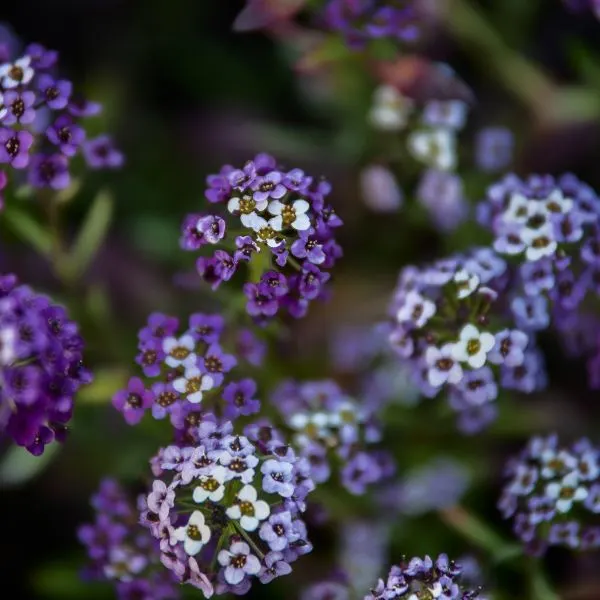
The sweet alyssum is perfectly sized to fill the bottom layers of your garden. The low-growing plant grows tiny white flowers to help highlight your garden, eliminating any dirt gaps. Sweet alyssum also pairs well with dahlia, thanks to its size and non-competitive nature.
22. Black Eyed Susan
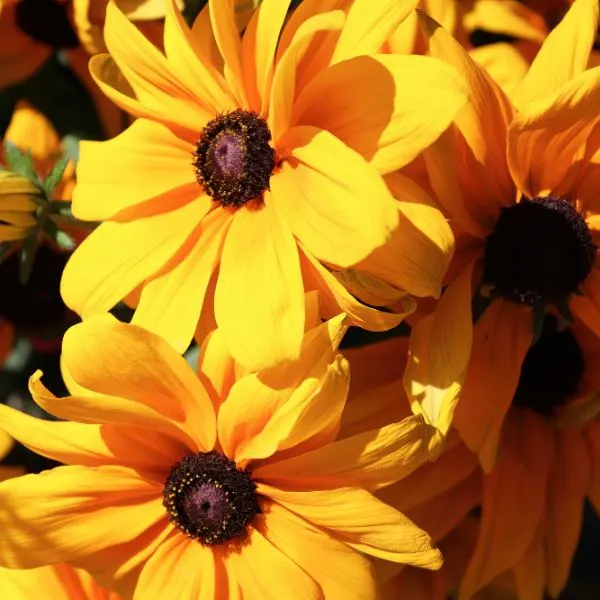
The bright yellow, orange, golden, or red petals of the black-eyed Susan brighten up your garden and help to accentuate the dahlia flowers. The plant is designed with the bright petal surrounding a deep brown center disk, mimicking the look of the sun.
Growing to about 3 feet tall, the flowers can be grown on a garden bed. Alternatively, you can pair them side by side with dahlias, if you have the short to medium dahlia varieties.
23. Zinnia
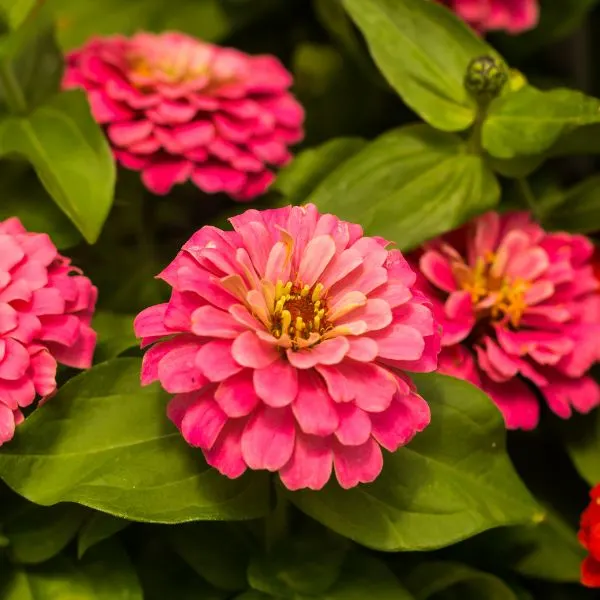
Blooming from summer through fall, you want to plant zinnia and dahlias to experience their blooms at their peak together. The best part of using zinnias is they come in a range of color variations, whether you want an under-saturated or pastel-like finish. Growing to about 4 feet tall, these flowers are great planted with dahlias side by side in garden beds or borders. You can also put the flowers together in a cutting garden.
24. California poppies

With minimal maintenance needs, California poppies do well near dahlias without competing for resources. These flowering plants grow bright orange cup-like colors that accentuate your garden against the dahlias. Plus, they don’t take up much space, either.
25. Dusty Miller
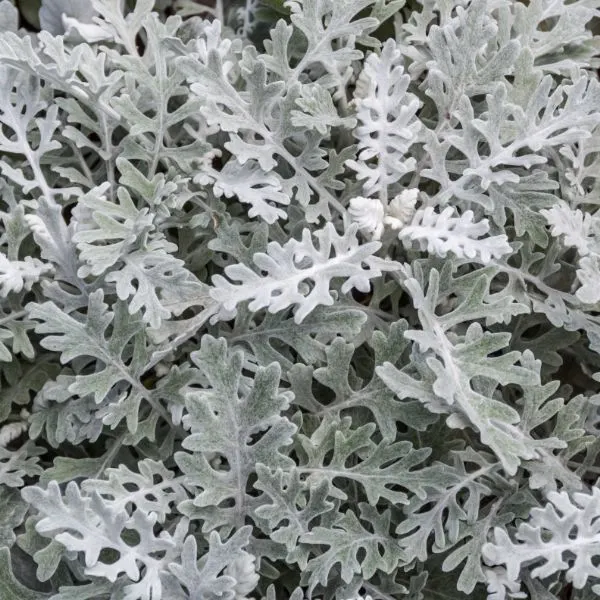
Also known as ragwort, dusty miller is a medium-sized plant. Growing clusters of tiny beautiful yellow flowers with soft green foliage, these plants complement dahlias pretty well. You can grow them as borders in front of the dahlia or use them to fill up the space between the dahlia tubers.
26. Cosmos
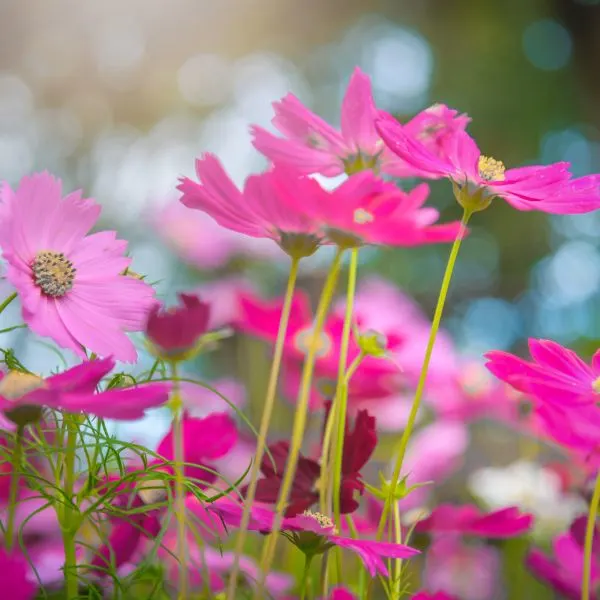
Resembling daisies, cosmos grow colorful flows on their long, thin stems and bloom from summer through all. These beautiful flowers come in a selection of colors, including white, purple, pink, and burgundy, to name a few.
These plants also feature elegant spiky leaves and pair well with the equally colorful dahlias, producing contrasting textures and flower shapes in your garden. Their beautiful flowers also attract a range of pollinators and birds.
27. Petunias

If you want to elevate your garden into a scenic spectacle, pair petunias, and dahlias. Boasting a variety of colors, shapes, and textures, growing petunias and dahlias in your garden adds a beautiful interest.
28. Marigolds
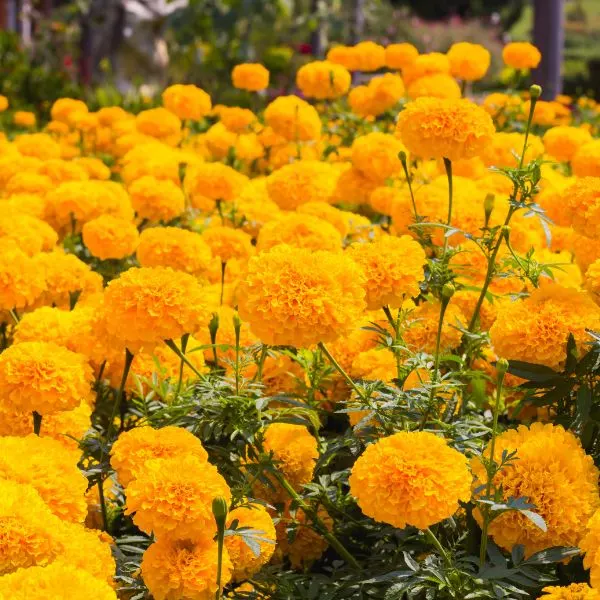
Similar to petunias, marigolds add an elegant interest to your garden. available in yellow, orange, or pink varieties, they pair well with dahlias for a thick summer floral display.
Add Healthy Herbs
29. Artemisia
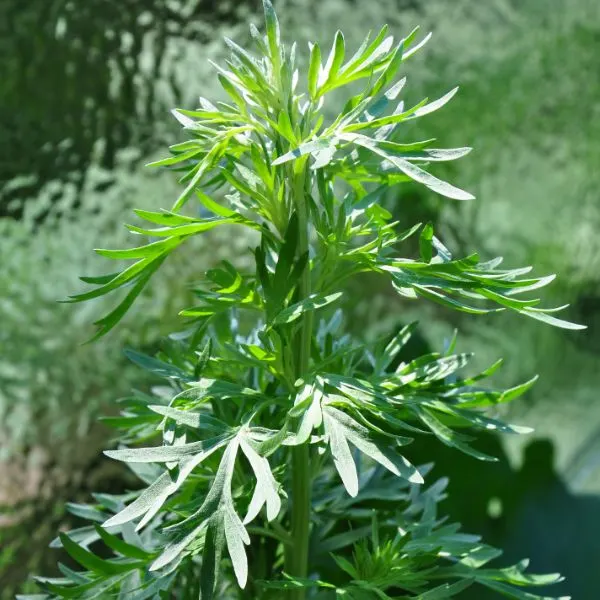
Companion plants for dahlias aren’t limited to showy blossoms and edible flowers alone. You can find a variety of edible and healthy herbs to pair with these beautiful herbaceous flowering perennials. Artemisia is one of these many herbs.
Also known as mugwort, Artemisia offers several edible varieties you can use in different European, Asian, and North American cuisines. These plants have a pale and cloud-like color that helps to balance and accentuate your dahlia flowers. Further, the herbs also release a pungent aroma that’s effective at repelling unwanted insects. These include snails and slugs.
Note: Avoid planting Artemisia in rich soils because excessive nitrogen affects their growth, particularly the stems.
30. Coastal Lavender

Lavender, particularly coastal lavender, also grows well with dahlias. While this variety can get large, it still pairs well with dahlias without blocking their sunlight exposure. In addition to its beautiful small lavender blossoms and pleasant aroma, lavender makes excellent filler for dahlias in a flower bed. Its purple blossoms add an extra layer of chic to your garden space.
31. Garden Cress
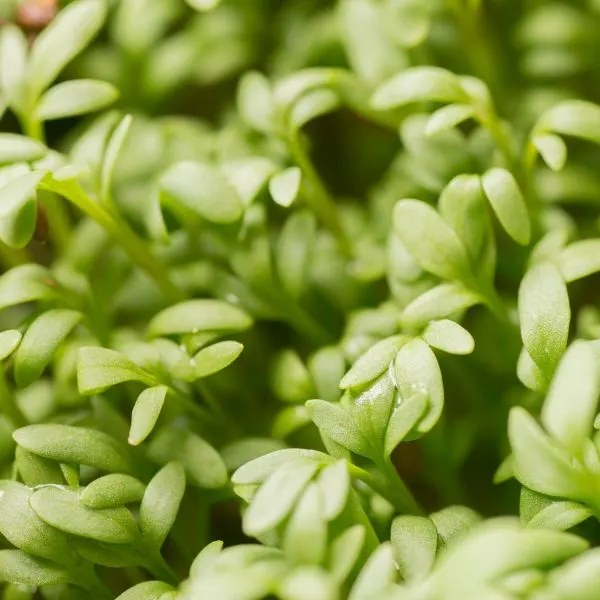
While keeping your garden beautiful and elegant, you can pair cress with dahlias for a fresh supply of greens. After all, it’s a win-win situation! You keep your garden beautiful while saving on a good supply of salad greens. Also known as garden cress, cress is a fast-growing edible herb, related to watercress and mustard.
It also possesses that peppery and tangy taste and fragrance. The best part of this herb is its tall and thin, using up very little garden space. Plant them in between dahlias to fill up the space while creating a beautiful plant contrast.
Note: You can mix and match with a wide range of other herbs, like dill.
32. Salvia
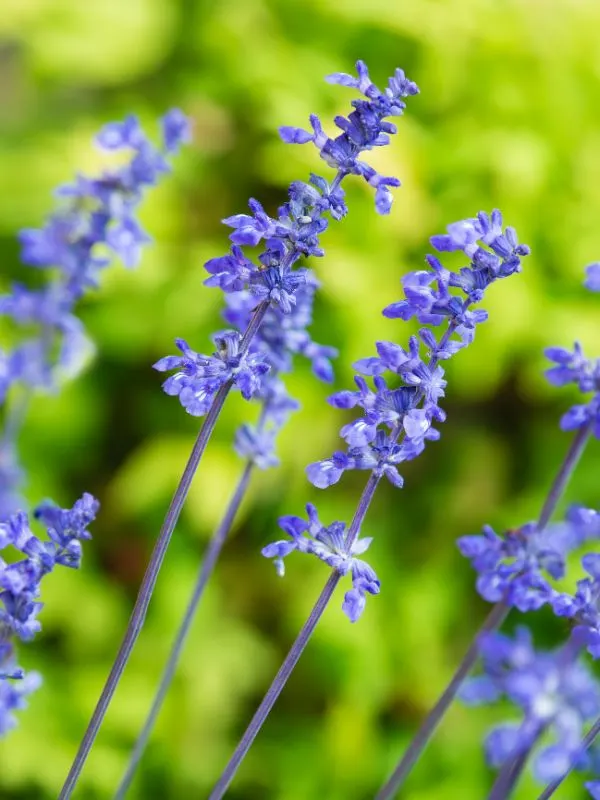
Salvias grow tall with striking spiky purple-colored blossoms that do a great job of attracting pollinators. Theey attact butterflies, bees and other insects. They also help protect dahlias by using their strong foliage aroma to repel slugs, rabbits, and deer.
33. Coriander
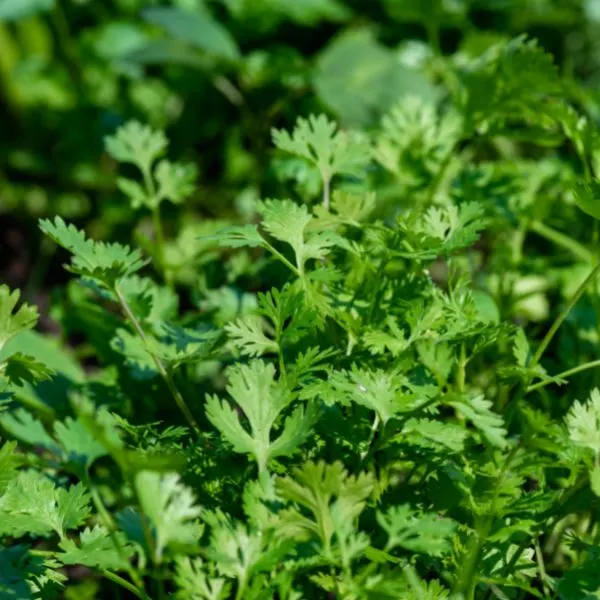
Among popular herbs, coriander also grows well with dahlias. Add these herbs to your garden to protect dahlias from aphids. You can also use them to fill out the ground-level space in your garden space to repel weeds. Plus, you have a free supply for making salsas, marinades, curries, and a range of other delicious dishes.
34. Mint

As unbelievable as it may sound, mint pairs well with dahlias. sure, the herb is invasive when left alone. but, it doesn’t interfere with the growth of the dahlia tubers. In fact, many varieties of mint offer excellent ground cover for dahlias while its strong aroma repels unwanted pests. The same minty aroma attracts other pollinators.
35. Thyme
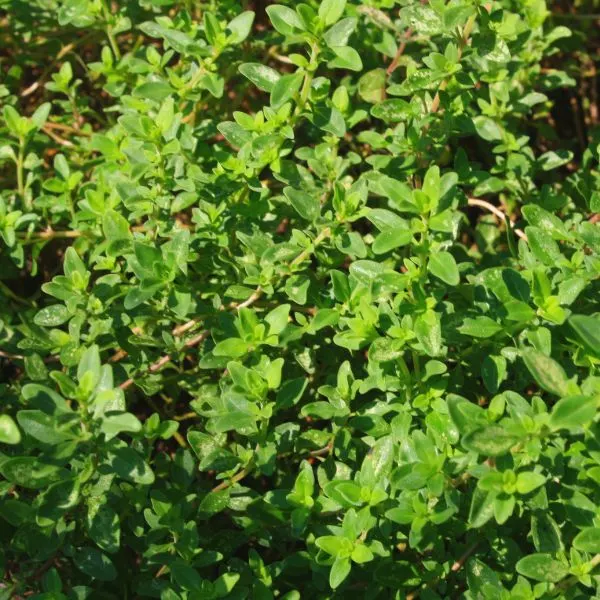
The sweet-scented thyme is an effective pollinator attractor, just like mint. It also offers great ground cover for dahlias.
36. Rosemary
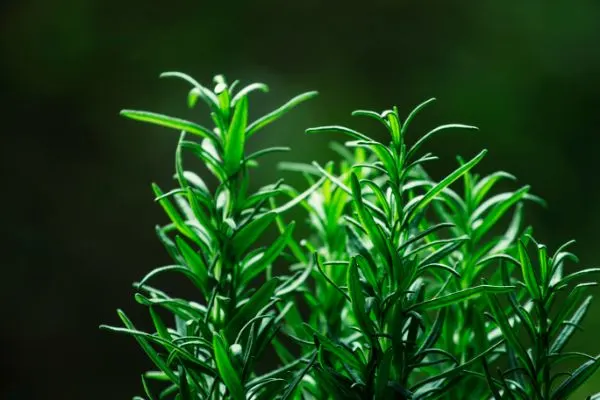
The strongly scented rosemary possesses similar properties for dahlias as the strong scented mint and thyme. In fact, you can pair rosemary and thyme with dahlia to give you a good supply of fresh herbs.
Note: Only pair rosemary and thyme with mint by growing them close by in separate containers. Rosemary can also be grown for aesthetics (instead of consumption). This results in the development of spiky blue, lavender, white, or pink blossoms.
However, they can grow up to 8 feet tall when exposed to full sun consistently. They make excellent bedfellows and add that attractive fragrance. You can pair them with dahlias for a striking backdrop.
37. Anise
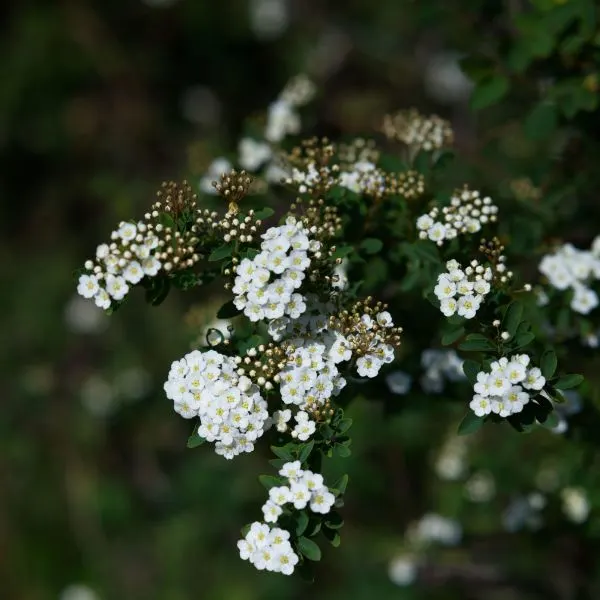
Anise plants pair well with dahlia to protect them against multiple pests. These plants attract predatory pests, like wasps that feed on aphids that prey on dahlias.
Integrate your Own Little vegetable Garden With Vegetables
38. Bush Beans
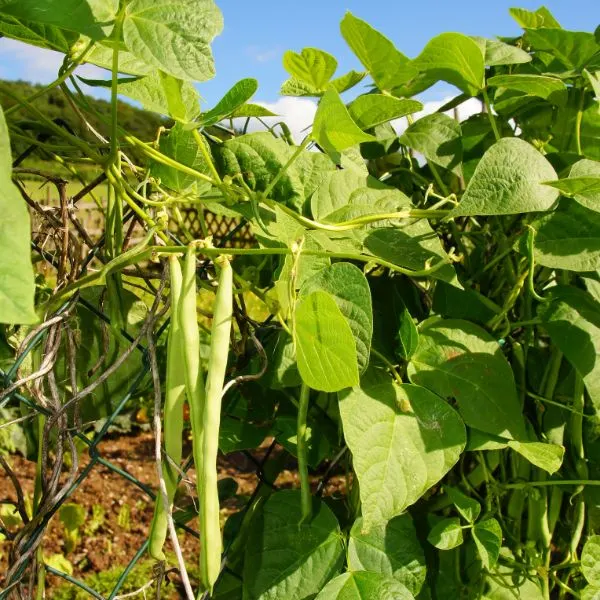
Vegetables are not very popular dahlia compainon plants. But, vegetables, like bush beans, pair very well with these plants. The best way to pair the two plants is by planting the beans on the base of each dahlia. Bush beans come with two benefits for dahlias.
First, they don’t use up much space. The roots of bush beans possess nitrogen-fixing properties, thanks to the bacteria that live there. This helps to enrich the soil and promote the healthy growth of the plants.
39. Use Ornamental Grass for Ground Covers
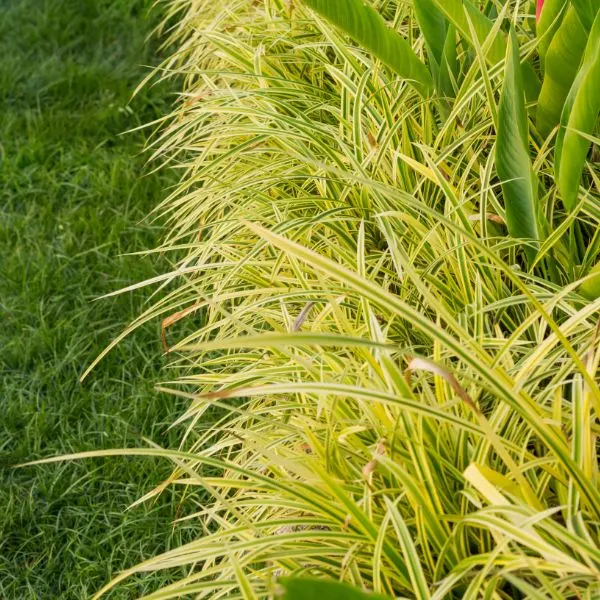
Ornamental grass pairs well with dahlias to provide spectacular ground cover. Ornamental grass is a popular ground cover option for gardeners in colder climates, thanks to their cold weather hardiness.
Ornamental grass also comes in various options to add a striking contrast to your blooming dahlias. Some of the common varieties include redhead (you can also pick them with flowers to add to a vase or bouquet), switchgrass, and Stipa gigantean.
40. Guarantee Fresh Supply for Your Salads with Salad Greens
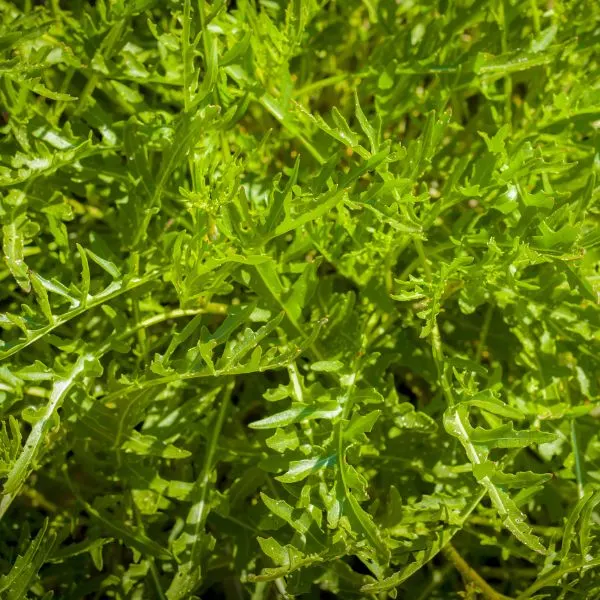
Salad greens also complement dahlia by growing as ground cover, at the base of the dahlias, or between dahlias plants. These fast-growing greens can be planted during early spring and harvested in 4 to 6 weeks before they start bolting. Popular options include arugula or leaf lettuce.
6 Worst Dahlia Companion Plant Types
Dahlias are popular plants to pair with. However, this doesn’t mean they grow well without just about any plants. To avoid disrupting their growth or damaging your garden, here are plants to avoid growing with dahlias;
1. Keep Heavy Feeders AWAY
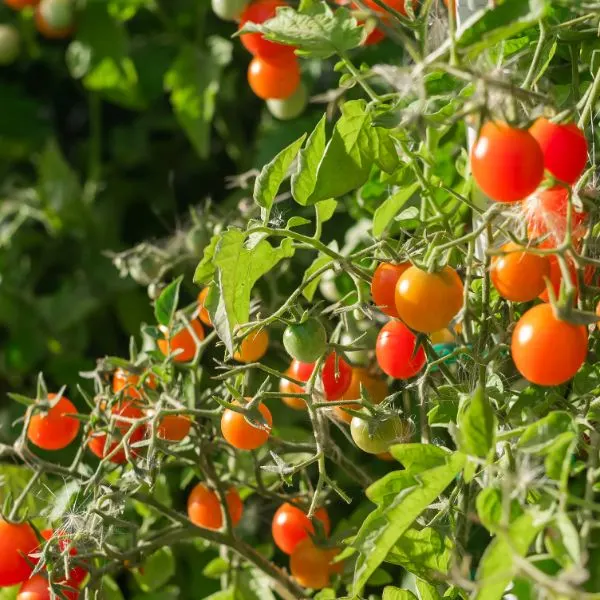
Dahlias are heavy feeders. So, you want to keep them away from other heavy feeders. This is because planting them together results in them competing for resources. These include plants like corn, beets, tomatoes, and the Brassicas family (cabbage, broccoli, etc).
2. Protect Against Sun Blockers, Taller or Larger Plants
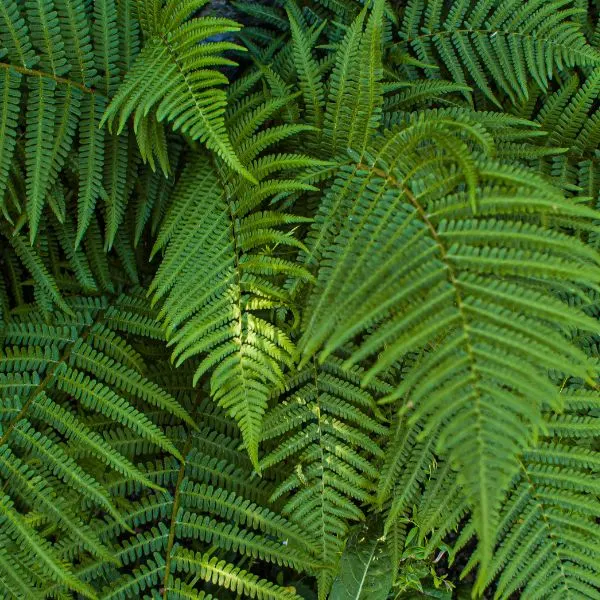
Dahlias grow tall but require exposure to full sun for at least 6 to 8 hours a day. Pairing them with taller plants that equally rely on the sun isn’t ideal. This is because, in addition to competing for the sun, they will shade out the dahlias. Good examples include sunflowers
Note: Some gardeners find a way to integrate sunflowers into their dahlia gardens to complement these equally tall flowering plants. Other options include daisies and helenium
3. Significant Space Occupiers Aren’t A Good Idea
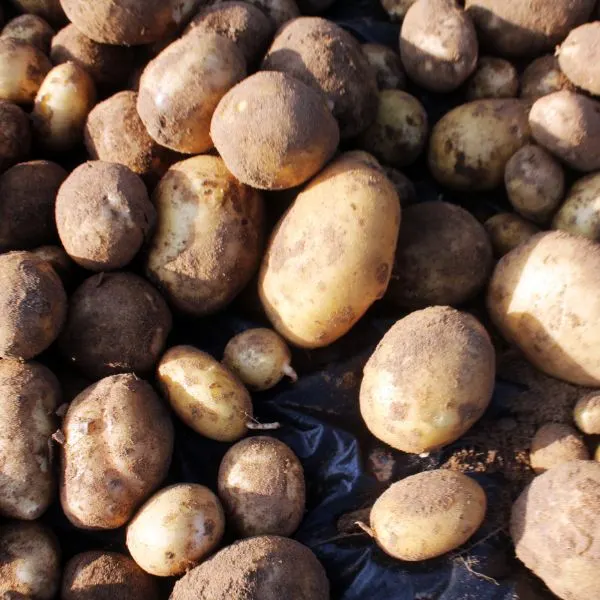
Dahlias take up a lot of space for their tubers to grow. So, you don’t want to pair them with plants that take up space too, particularly tubers. In addition, to fight for underground space, they may also compete for nutrients.
After all, tubers and ling rooted plants use these parts of the anatomy to absorb the nutrients and water from the ground to feed the rest of the plant. These include vegetables like potatoes, yams, yucca, beets, carrots, onions, celery root, and other similar root vegetables.
4. Avoid Growing Vines Close By
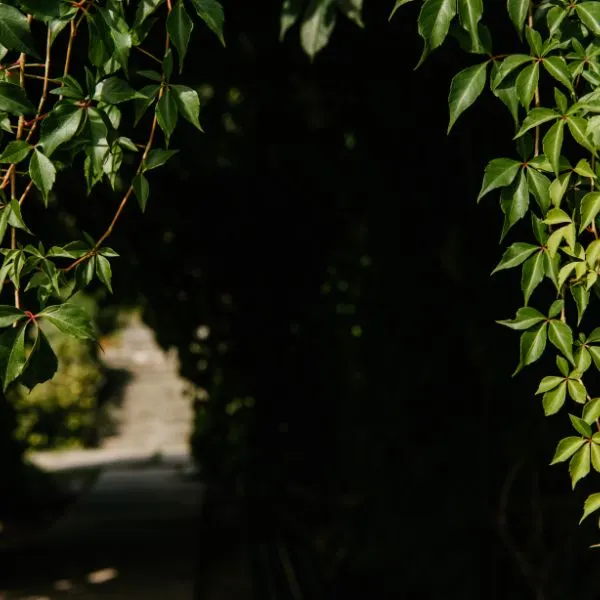
Vines like clematis do a great job of aesthetically complementing dahlias. However, vines in general aren’t the best companion plants for dahlias. Vines are fast growing and when paired with dahlias can easily climb up their stems.
While this may create a beautiful sight in the beginning, the vines can eventually damage the entire plant, over time. Their suckers can dig into the stems while the vines weigh down the entire plant. So, while you can plant dahlias and vines together in a garden they have to be further away from one another.
5. Avoid Most Vegetables

Most vegetables are pretty hungry for water and nutrients. While dahlias look great planted near some vegetables, most aren’t the best companion plants. These plants will end up competing with dahlia, ultimately, stunting the growth of the latter.
Moreover, most vegetables tend to attract pests that are detrimental to dahlias. These include pests, such as aphids, snails, and slugs.
6. Not All Ground Cover Is Created Equal
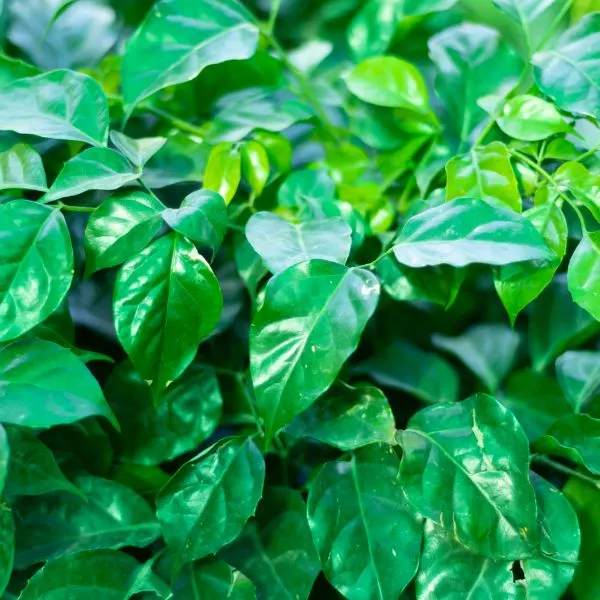
Avoid planting dahlias with thick ground cover. These include wild thyme, moss phlox, trailing periwinkle, creeping Jenny, and winter creeper, to name a few. While these look amazing, they retain a lot of water. Now, with lots of water near the roots of dahlia, this may lead to tuber or root rotting due to the excess water or moisture.
In addition to the plants above, make sure to KEEP OUT weeds. While this is a no-brainer, when weeds spread, they can easily outcompete dahlias for nutrients and water. Plus, this happens pretty quickly due to their fast-growing nature.
Frequently Asked Questions (FAQs)
Can You Plant Dahlias Next To Vegetables?
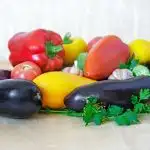
You can plant dahlias next to vegetables. However, most vegetables are competitors for nutrients, making them unsuitable to pair with dahlia. Vegetables are also prone to attracting dahlia-preying pests, such as aphids and slugs. Our personal favorite vegetables to pair with dahlias are bush beans.
Can You Plant Dahlias In Pots With Other Plants?
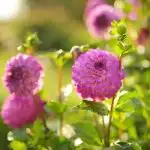
Unbeknownst to many people, you can plant dahlias in pots with other plants. You can find a variety of small to medium-sized plants to pair with dahlias in pots or containers. Just make sure you get the appropriate pot or container size for your dahlias.
What not to plant near dahlias?
It’s not a good idea to place them near trees or shrubs with dense root systems.
This is because the roots can compete with your dahlias for water and nutrients. Also, avoid planting plants that require heavy watering or have shallow roots, like tomatoes or strawberries, as they can cause soil moisture issues and increase the risk of disease.
What vegetables do dahlias companion plants?
There are a few vegetables that can be good companions, including: beans, peas, and cucumbers are all good choices since they don’t need a lot of watering and can benefit from the shade provided by the dahlia foliage.
Can you plant dahlias close together?
Yes, dahlias can be planted close together, just make sure to give them enough space. A good rule of thumb is to space dahlia tubers about 18-24 inches apart. Be sure to check the growth trend for the variety you have, because this will dictate the spacing.
How many dahlias can you plant together?
There isn’t a set number for how many can be planted together, the general rule would be 18 – 24 inches appart. That being said, you need to consider what type of dahlia you have and how it will grow.
If you take that into account then you can plant as many as you want together, so long as the spacing is large enough.
Conclusion
When it comes to the companion plants for dahlia, the list is endless. These showy ornamental plants are perhaps some of the most versatile to include in your garden. Whether you want to focus on aesthetics or harness greens and herbs, you can always find some of the best plants to pair with dahlia. So, if you have these plants in your garden, go for this guide to instantly transform your gardening game.
More cool plant stuff
